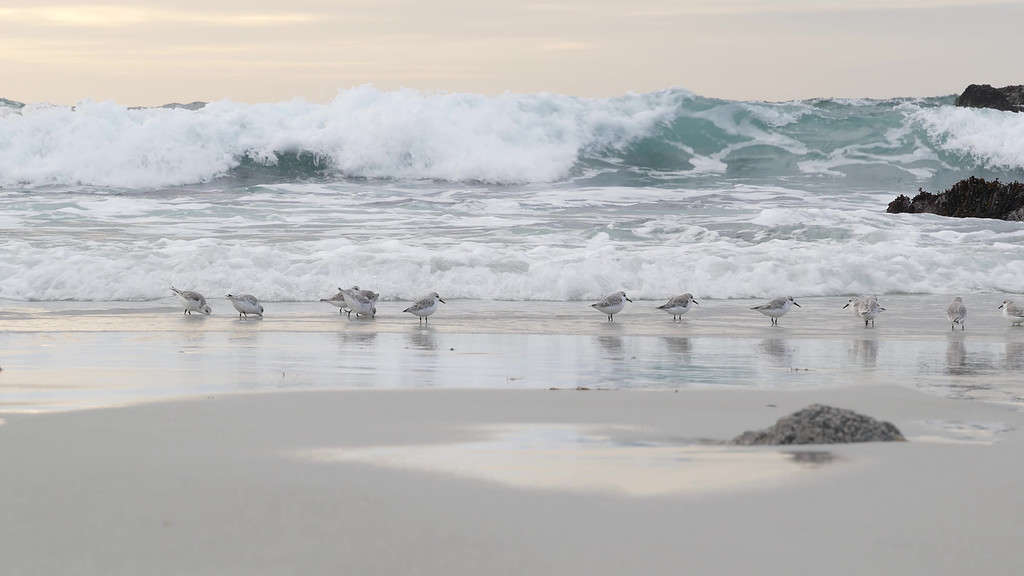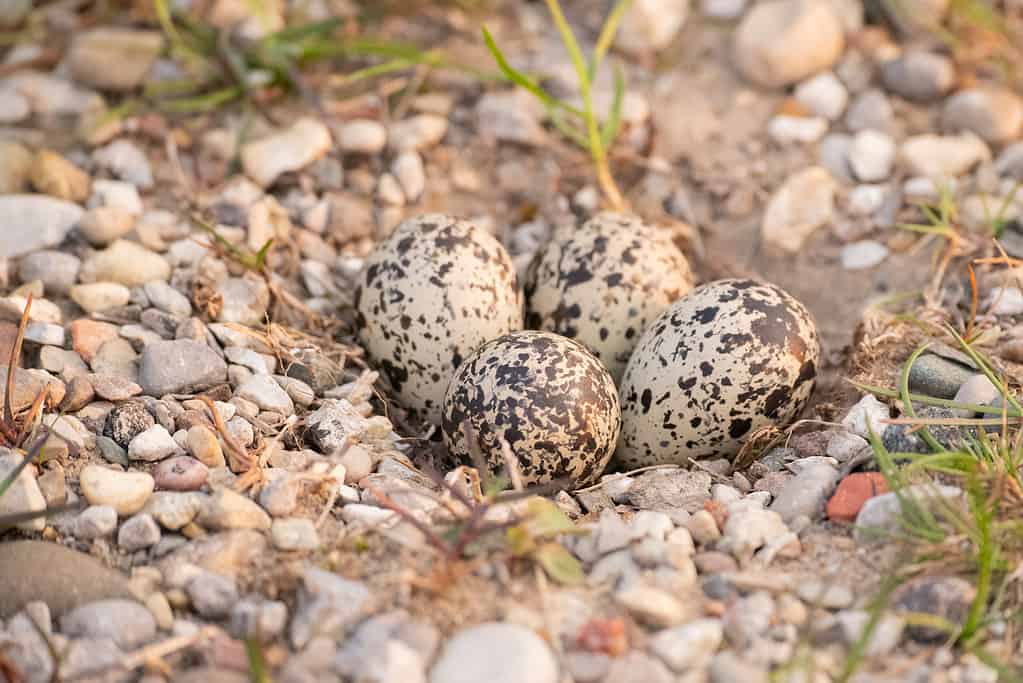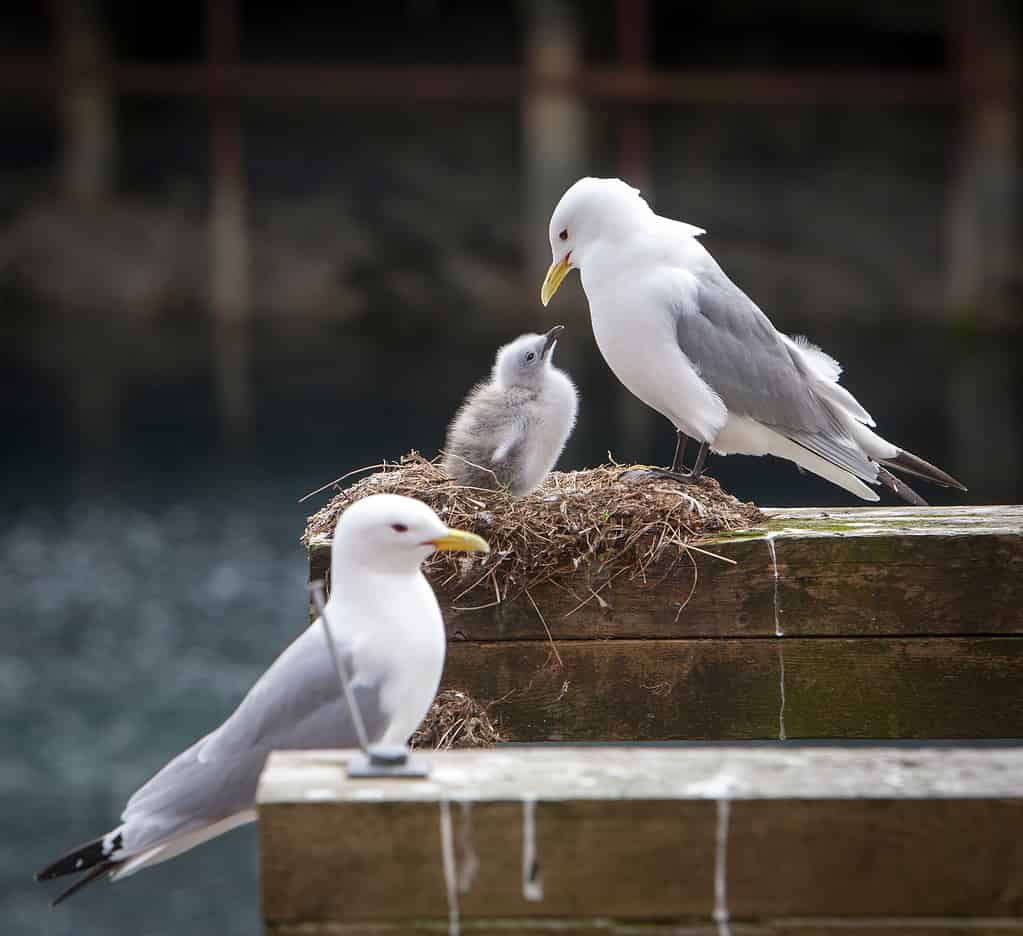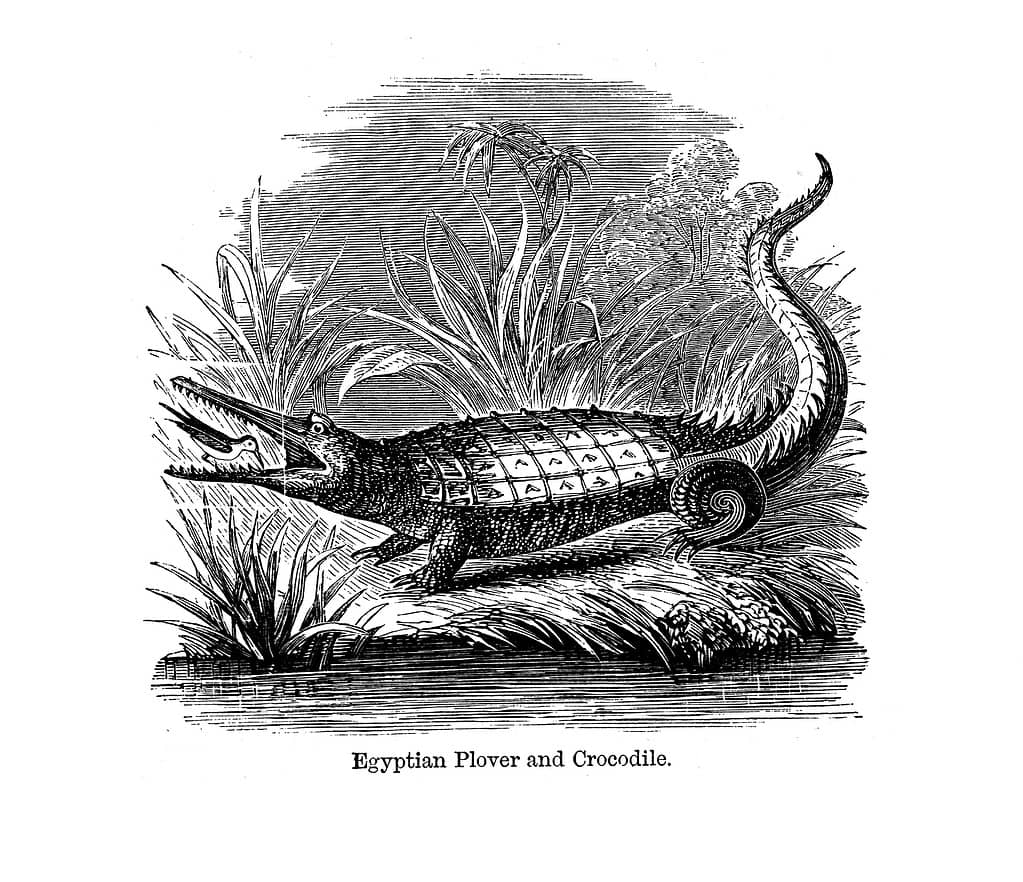
Some species of plovers can reach 80 mph while flying over the ocean during migration season.
©BoukeAtema/iStock via Getty Images
Birds are some of the most majestic animals. They are key players in supporting the ecosystem by serving as predators, prey, or pollinators. With so many unique birds, it can be difficult to distinguish between species.
Plovers are amazing birds that do not get much attention. These lovely creatures are overlooked on shorelines in favor of the more persistent seagulls.
This article gives plovers a chance to enjoy the spotlight, providing everything a fledgling birder needs to know about this unique species.
What Are Plovers?

These birds are typically peaceful and pose no threat to humans.
©Dee Carpenter Originals/Shutterstock.com
Plovers are small birds found near bodies of water. There are over 66 different subspecies of plovers, with each one adapting to a different environment. Most plovers live near rivers, lakes, and streams, but others live in the mountains or tundra.
Plovers are 6-12 inches long, with a 14–32-inch wingspan (depending on the subspecies). They weigh 1.2-12 ounces.
On average, a single plover lives three years in the wild or 10-15 years in captivity.
Where Do They Live?

Plovers and sandpipers cohabitate along the shoreline peacefully while hunting for food.
©DogoraSun/iStock via Getty Images
Because of their small size, plovers prefer to live on sandy beaches with low vegetation for easy mobility. Birders can easily find plovers near tidal pools where they hunt for worms and small insects in the sand.
In North America, plovers are found at the Great Lakes, across the Atlantic and Pacific Coasts, and in the Great Plains rivers.
During the winter, they migrate to the Caribbean and parts of South America before returning to their homes during the spring. Plovers are one of many birds that migrate south for the winter, but they reuse old nests when they return home.
Plover Reproduction Cycle

Plover eggs camouflage well in the sand due to their color and shading.
©kathy gasper/iStock via Getty Images
The plover reproduction cycle lasts between March and September, with some focusing on the late spring and early summer months.
Plovers build their nests in shallow scrapes in the sand, camouflaging them with shells and twigs. Mother plovers lay a clutch of three to four eggs per season and rotate with the father for incubation. Typically, the mother stays with the eggs during the day, while the father roosts throughout the night.
The parents are highly protective of their nests. When their nest is threatened, plovers perform a “broken wing display,” fluttering on the ground and making distressful chirps to mimic a helpless bird. If all goes according to plan, the predator will attempt an attack on the adult plover, who will lead the predator away from the nest.
The eggs incubate up to four weeks before hatching. The hatchlings are born with feathers, beaks, and full awareness, making them capable of moving and following their parents immediately after hatching. However, it will be several more weeks before they can fly.
What Do Plovers Eat?
Plovers are omnivores that eat a balanced diet of insects, worms, and seeds. The most common foods plovers eat are:
- Flies
- Beetles
- Worms
- Crustaceans
- Seeds
- Stems
- Roots
Because their prey is buried in the sand, plovers perform unique hunting dances by pecking the ground and kicking up sand with intermittent pauses. The prey senses the vibrations underground and waits for them to stop before surfacing, believing the threat is clear. As soon as the insects surface, the plover leaps down and snatches them for a quick meal.
The dance is unique to each bird and subspecies. For example, the coastal plover shuffles their feet against the sand.
Do They Have Any Predators?

Seagulls compete with plovers for resources and may even bully them out of their nesting grounds.
©JimmyLung/ via Getty Images
Plovers are small birds, making them valuable prey for larger predators in the wild. The most common plover predators are:
- Crows
- Raccoons
- Foxes
- Rats
- Skunks
- Falcons
- Hawks
- Cats
While medium-sized predators like cats and foxes eat adult plovers, slower and less carnivorous animals like crows, rats, and skunks attack plover nests and eat their eggs.
Several reports indicate seagulls attacking plover nests, destroying their eggs to push them out of their territory. Seagulls are larger birds that stay in groups called colonies. A colony of seagulls pushes the smaller plovers out, so the gulls have a better chance of scavenging food from humans.
Are Plovers Endangered?

Humans driving over sand accidentally destroy plover nests.
©Randy G. Lubischer/Shutterstock.com
Unfortunately, several plover species like the Great Lakes piping plover are endangered due to habitat loss and environmental changes due to human activity.
Plovers fly south for the winter and return to their previous nests in the spring. When their nesting grounds are destroyed for urban development, they reproduce less. Additionally, when other animals push them out of their feeding grounds, their numbers dwindle further.
Organizations like the Superior Watershed Partnership are advocating to protect plover nesting grounds to save the species from extinction.
Fun Facts About Plovers and Summary

Crocodiles and plovers work together for a mutually beneficial outcome.
©Cannasue/iStock via Getty Images
- The name plover comes from the Latin word “pluvial,” which means “rain.” They may have received their name due to the fact that their migration patterns coincide with the rainy seasons in Europe.
- Killdeer and lapwings are other names for plovers and their closely related cousins, sandpipers.
- Plover subspecies are named after their region and habits. For instance, the piping plover makes piping sounds when performing its hunting dance. The American golden plover lives in North America and has bright gold feathers. The Great Lakes piping plover primarily lives in the Great Lakes and behaves similarly to other piping plovers across the country.
- Piping plover’s feathers and beak change in the winter. Their feathers turn from orange to pale yellow, and their beak becomes black.
- There are over 2,600 western snowy plovers along the Pacific coast.
- Plovers reuse the same nests for many years before searching for another location.
- Spur-winged plovers mate for life and incubate the eggs together.
- The American golden plover is one of the fastest shorebirds in the world. They migrate from Alaska and Canada to Hawaii or South America within three to four days. This means they can reach speeds between 30-80 mph to travel 3,000 miles.
- Each plover has a unique dance to attract insects and worms to the surface.
- Plovers have a mutualistic relationship with crocodiles and alligators. The crocodile allows plovers to pick food bits out of its mouth. Thus, the crocodile’s teeth are clean, and the plover has a free snack.
- Plovers perform “broken wing display” dances to trick prey into chasing the parent, averting attention from the nest.
- Piping plovers are endangered because of habitat loss and nest disturbances. Seagulls attack plover nests to force them out of the nesting grounds.
The photo featured at the top of this post is © Agami Photo Agency/Shutterstock.com
Thank you for reading! Have some feedback for us? Contact the AZ Animals editorial team.







